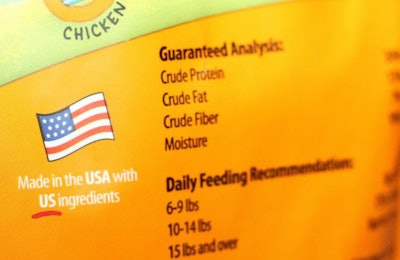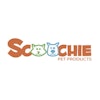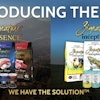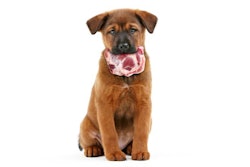
Pet food professionals are no strangers to ever-growing consumer demands for transparency. If it’s any comfort, consumers make the same demand – at even a higher level – for the foods they eat themselves. In fact, “clean supreme” heads Innova Market Insights’ top 10 trends for 2017, its annual list of what people in the human food industry should track in the year ahead. Because of never-ending humanization of pet food, the list can provide insights for our industry, too.
In a webinar on November 22, Lu Ann Williams, director of innovation for Innova, described the 10 human food trends she and her team are watching and believe others should watch. The ones that apply most closely to pet food are instructive.
Clean reigns supreme on human food and pet food labels
Building off the continuing interest in all things natural – Williams said Innova first named “go natural” as a trend to watch in 2008 – this concept has evolved, and continues to evolve, far past its roots, now incorporating ingredient origin and sourcing as well as processing (or the lack thereof). “These are now the rules of the game,” Williams said. “It’s no longer a trend.” For example, while “no additives or preservatives” is still the most common natural-related claim on new food and beverage product launches worldwide, it’s “not a differentiator, more of a given,” she added.
Innova introduced the idea of clean and clear labels with its top trends list for 2015, according to FoodIngredientsFirst.com, and the Innova database is still showing double-digit growth of clean label claims in new product launches worldwide. Latin America is growing the fastest at 37 percent albeit from a small base; Williams said the region is “catching up.” More than 50 percent of new food and beverages launched in Australia the past year carried this type of claim.
And it’s not just about the number of ingredients on the label but also the source of even color additives, as well as processing and related areas. FoodIngredientsFirst.com posted a chart from Innova on clean supply chain label claims, highlighting the increases since 2011 in environmentally friendly and animal welfare claims on new global food and beverage launches. The growth is robust, to say the least: 72 percent compound annual growth rate (CAGR) for environmentally friendly and 45 percent CAGR for animal welfare over the past five years. Animal welfare claims especially likely resonate with pet parents, too.
Williams commented that, while “natural” as a label claim is the ultimate goal, it’s just not well defined, even by most regulatory bodies. We know that plays out in pet food, too. “Because the term ‘natural’ can be somewhat nebulous, some manufacturers are seeking more specific terminology,” wrote Ethan D. Mizer in the Fall 2016 issue of Natural Pet News. He quoted Jennifer Adolphe, PhD, senior nutritionist at Petcurean Pet Nutrition, saying: “The industry’s trying to look for a more narrow focus to define their food. The term ‘grain free’ is an example. We don’t make natural claims on our products.”
Mean green disruption machine
Innova named “disruptive green” as its second most important trend to watch, and in this case, it’s all about plants. Plants in nearly every type of food and beverage product, from plant-based milks to meat substitutes and vegan offerings. “It’s truly mainstream now,” Williams said. “People are looking for innovative options to include more of the inherent benefits of plants in their daily lives.” Human food companies are responding: The number of new products launched globally with some sort of plant-related claim leaped from about 100 in 2011 to nearly 700 in 2016, resulting in a CAGR of 63 percent over those five years.
As human food goes, so goes pet food, and of course, pet parents have sought many of the same plant-type ingredients in the foods they buy for their furry ones. Yet a hyper-focus on meat and animal-based proteins has also consumed many pet owners for a few years now, despite the concerns by some experts that this trend is not sustainable, as pet foods compete with human foods for many of those same animal proteins.
For pet food, these may seem to be competing concepts, but a suggestion that Williams made to human food manufacturers may apply here: “Even if you have an animal-based product, you can still work in plants and take advantage of this trend.” Thus, witness dog foods that prominently proclaim proteins such as lamb, beef, turkey or chicken on their labels but also tout the inclusion of dandelion greens to support a healthy digestive system.
Plain sophistication and seeds of change
The final two of Innova’s trends for 2017 that seem most relevant to pet food are “plain sophistication” and “seeds of change.” The former refers to the craft movement, starting with beer and now spreading to many other food and beverage categories. What was about 100 new products with craft-type claims in 2011 has risen to nearly 400 in 2016, Williams said. We see similar claims on pet food products, using terms such as “artisanal,” “hand-packed” and “like home-cooked.”
The other trend, seeds of change, has interesting implications for pet food. In human food, the concept has fully embraced grains, too, though in this case they’re ancient grains like quinoa, amaranth, spelt and millet. Despite this apparently unstoppable trend in human food, pet food continues to go grain free; Maria Lange of GfK reported in a recent webinar that grain-free pet food sales in the US pet specialty channel are still growing 20 percent a year, reaching US$3 billion to date in 2016. Continuing sales growth obviously indicates ongoing consumer interest and demand, so perhaps many pet food companies are weary of even going the ancient grain route, despite the benefits of an ingredient like millet.
Seeds are another story; pet food companies have definitely embraced the health benefits of and consumer interest in ingredients like chia seeds. In human foods, products with chia seeds, along with ones with quinoa, are showing the biggest spikes in claims on new products, Williams said.
In case you’re curious, the remaining six trends rounding out Innova’s list include sweeter balance (in terms of sugar content), kitchen symphony (“authentic” foods and flavors from around the world), body in tune (the beginnings of personalized nutrition), encapsulating moments (claims positioning the products for certain times or situations during the day), beyond pester power (about the influence of kids on the foods their parents buy) and fuzzy borders (among categories).


















